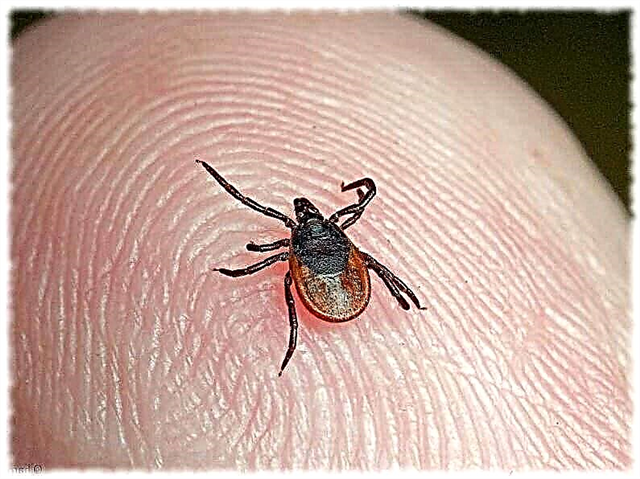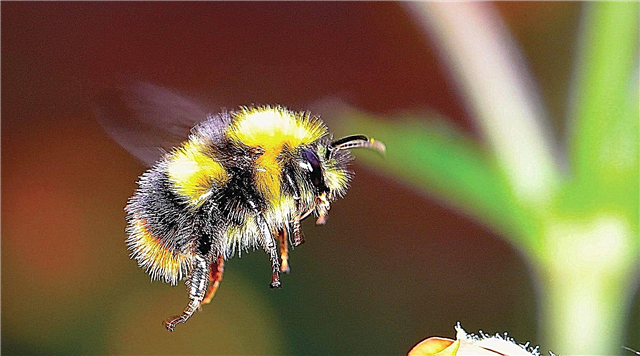
Chameleons are lizards that can disguise themselves as their environment, changing their color. The word chameleon is translated from German as "earth lion."
Chameleon: how it looks, description, structure, characteristics
These lizards are very interesting creatures. Their torso is completely covered with tuberous skin with small growths, thick patches. Some individuals on the face have sharp horns, helmets, small pearl placers near the eyes.
Chameleons prefer to climb trees. In the process of evolution, they have two and three fingers left on each foot. The fingers grow together in two opposing groups. In each group, 2 fingers on the front paws and 3 on the hind legs look like “claws”. At the tips of each finger there is one sharp claw, thanks to which the lizards can calmly climb, clinging to the bark. In addition to the legs there is a tail, which the chameleons also use in the process of climbing the trunk.

These lizards are real kings of disguise. They hide not only from their prey, but also from predatory animals. Also, chameleons are famous for the fact that they can be in the same position for several days. In special cases, chameleons freeze for several weeks. So the lizard lulls the alertness of its prey and calmly attacks.

Chameleons are practically not visible in the thickets of plants. They can take any color, disguising themselves as objects around. If you look at the chameleon in front, it will appear flat. Color changes occur due to the special device of the skin, which is able to disguise itself as the natural habitat of the animal.

Character and lifestyle of a chameleon
Most of their time, chameleons rest on tree branches. They can wait for prey or just relax. Lizards descend only when the time of the mating season comes. It’s hard for chameleons to move around the earth. Two-fingered limbs are more suited for climbing trees.

Thanks to the powerful tail, chameleons can feel calm in dense thickets. They always have something to cling to and where to escape. Chameleons are active during the day, they rarely move. When in danger, they can run and jump extremely fast. The danger is represented by snakes, other lizards and birds. If the enemy noticed a chameleon, then it begins to inflate and change color. A reptile can bite a little, but it can not do much harm. The jaws of the chameleons are too weak.
Many people want to have chameleons in their house or apartment. This is due to the fact that the animal is quite unpretentious and does not require special care. If you provide all the conditions necessary for a lizard, then it will become your friend for many years. Consult with experienced veterinarians about leaving.
Where do chameleons live?

Chameleons live in sub-Saharan Africa. They can also be found in Madagascar, adjacent islands. Some species live in Asian, Arab countries. Less often they can be found in America in the warm states.
Chameleons prefer a tropical climate, savannahs and foothills. It’s easiest to hide from dangers, and there is a lot of food there. Some species of animals are well adapted to living in the steppe zones.
Interesting fact: in warm countries, chameleons have houses for catching flies. Chameleons can be found in Spanish homes and outlets.
Chameleon Enemies - Who Eats Chameleons?
Chameleons have many enemies in the wild. They can become victims of birds of prey, snakes, larger lizards. The most reliable protection against predators can be considered a filigree ability to disguise themselves as the surrounding nature.
How does a chameleon change color?

If we examine the skin of the chameleon in the context, we can see: under the transparent layer of the epidermis is a thick layer of the dermis.Two layers are able to reflect the blue and violet spectrum. Around them are two more layers - one with yellow cells, and the other with brown ones.
It was found that color change occurs as a result of changes in temperature, lighting, and even ... the creature’s mood. And special cells called chromatophores are “to blame” for this. This Greek word literally means "color bearing" (chroma - color, paint and phoros - bearing). Chromatophores are located both in the surface (fibrous) and in the deeper layers of the skin of the chameleon and have a branched structure.
The mechanism of operation of these pigment cells is rather complicated. It is directly related to the functioning of the nervous system of the reptile. The cytoplasm of the chromatophores contains pigments that determine the color of the skin of the chameleon. They are black, yellow, reddish, dark brown. Pigment grains are not fixed in one place, but have the ability to move throughout the cell, either concentrating in the center, or “crawling” to its ends. The number of these pigment grains in the chromatophores is also not the same: in one cell there are more of them, in the other - very small. Therefore, the coloring of the chameleon due to this will be uneven.

When the processes of the chromatophore contract, pigment grains are collected in the center of the cells, and the skin becomes whitish or yellow. And when the grains of dark pigment gather in the branches of the cell, the skin becomes dark, it can even turn black.
A variety of shades are obtained as a result of a combination of pigment grains of both layers - superficial and deep. The nature of the appearance of green tones is interesting: this is due to the refraction of rays in the outer layer, which contains many light-refracting crystals. Because of this, the color of the chameleon can quickly change: from light - through various bright types of orange, green, purple - to black. Moreover, it can vary both over the entire length of the reptile's body, and in separate stripes and spots.
Thanks to such a unique skin structure, chameleons can change their color to the smallest detail. The whole body of the animal shimmers with a spectrum of shades. Due to the invisibility of the chameleons, it can only be seen while moving. For this reason, the dinosaurs rarely move, preferring to stand and wait for prey. Some species of snails can move much faster than chameleons. Each movement seems to be committed in slow motion - a chameleon tracks them and fixes them.
Why does a chameleon change color?
Scientists Brucke, P. Baer and Kruckenberg also revealed that the causes of color change by these reptiles can be both physiological and emotional in nature. The first include, in addition to the above, temperature, lighting, high humidity, as well as dehydration, hunger and pain; to the second - a feeling of fright, a state of aggression in relation to the enemy or in an undesirable meeting.
The same scientists came to the conclusion that the nervous system of the reptile is the main mechanism that drives the pigment grains in the chromatophores: from the central nervous system, an impulse along the nerves is transmitted to each chromatophore, causing their movement. A curious discovery was the fact that a huge role in changing the color of the chameleon is played by his eyes.
It was experimentally established that the ability to change skin color in this reptile will be lost if the optic nerve is damaged or its eyes are deprived. That is, such a chain can be traced: light, falling into the eyes and sending signals through them, acts on the nervous system, and the latter on the chromatophores.
Experts, exploring the phenomenon of chameleon color changes, concluded that the central nervous system of the reptile contains two centers - automatic and strong-willed, and both of them are as if responsible for changing the color of the reptile. The first is "responsible" for the tone of the color change system and when irritated, the skin brightens.In turn, the automatic center is dependent on the volitional center, which suppresses its first and, therefore, gives the opposite effect - the skin darkens.
So, the experiments showed that if, for example, the right optic nerve is removed, then the entire right side of the reptile's body will turn white and vice versa. If the spinal cord of a reptile is irritated by electric current, this will cause lightening of the skin; if irritant
How do chameleons move?
Initially, the front foot smoothly moves forward, it constantly freezes, feeling the air around. It also gently lowers to the right place, clinging with sharp claws to the trunk of a tree. The remaining paws move at the same pace. Only after the complete transfer of all limbs does the chameleon move its tail to a new location.
Chameleons moves awkwardly. They constantly stagger, as if it is difficult for them to stand. However, the animal hunts with lightning speed - the tongue quickly protrudes and captures the victim. Victims can see the chameleon, but they do not notice it because of the special color. Even slight vibrations of the animal during movement can be regarded as the swing of a branch under the wind.
How many chameleons live?
Chameleons live on average up to 5 years. Some species can live 15 years, and others up to five months.
How does a chameleon hunt?
Mostly chameleons are motionless. If you watch the hunt, it may seem that insects just evaporate. This feeling is due to the lightning-fast movement of the lizard tongue. The language of a chameleon capable of shooting at decent distances can be considered a real miracle of nature. Basically, the size of the language of the chameleons is the same as the whole body.

The speed of reaction of the beast cannot but surprise - comparisons with it cannot be found all over the world. The human eye may not even fix the process of the shot. The tip of the chameleon's tongue looks like a small arrow, at the end of which is a small suction cup. The suction cup is wetted with a special sticky solution. Thanks to him, the victim cannot take off and is instantly drawn into the mouth of the lizard.
A similar feature of the animal was discovered in laboratory conditions. Then it turned out that the chameleon is not able to capture wet prey. Thanks to the ability to hunt at a considerable distance, chameleons feel great distances. Missed victims will not wait for the next shot attempt, so you have to catch insects right away.
Interesting fact: Chameleons hunt during the day only for the reason that during sleep they cannot change their color. So they become easy prey for predatory species.
What do chameleons eat in nature?

Most of the diet of chameleons is made up of small animals and insects. Sometimes lizards can feed on other smaller reptiles and reptiles. Large chameleons can prey on rodents, sometimes birds and other small animals are included in their diet. Chameleons can eat tree leaves, fruits.
Lizards will under no circumstances hunt poisonous animals or insects. Even with severe hunger, wasps or bees will not touch the lizard. Chameleons never mind eating a slice of citrus fruits, berries, can eat unstable vegetables, dandelion leaves, and so on.
Chameleon eyes

The eyes of the animal are covered with small scales similar to the rest of the skin. Thus, the viewing angle in the animal is not very large. It is limited by a small opening opposite the pupil. It happened in order to preserve invisibility. There would be no point in disguising yourself as leaves if you could see white eyes from them. There is an extremely inconvenient detail in the structure of the eye - chameleons cannot inspect large areas at the same time. They seem to spy on the world in a small click.
The pangolin also has a way out. The eye can spin in all directions. Therefore, the animal can inspect the entire space around it. Moreover, the eyes can spin separately.If the enemy approaches from behind, the chameleon will not even move. But the eyes at this time will look straight back. In this case, the chameleon can observe prey with the second eye.
Due to the lack of panoramic view, the animal constantly turns its eyes in all directions. Each eye can cover 180 degrees of surroundings. In the event that prey was discovered, the second eye connects to the first and determines the exact distance to the object.
It is very difficult to understand the system from the outside. To do this, you yourself will have to be in the place of a chameleon. With such natural hunting equipment, chameleons can not move for a long time - they simply do not need. The animal can live quietly on a branch, waiting for new victims.
Types of chameleons, names and photos
Currently, in the modern classification, there are 11 genera of chameleons.
Panther chameleon

Panther chameleons are considered the most colorful, vibrant species. Young individuals are usually nondescript gray. However, over time, their skin acquires various iridescent green reds and turquoise hues. Adults reach up to 52 centimeters in length. Males are slightly larger, they can be distinguished by a brighter color.
Thanks to oval multi-colored spots on the sides of the animal, the chameleons are called. They live mainly in the territory of Madagascar, on the adjacent islands. They live on bushes and trees, prefer to settle close to humans. Panther chameleons are the most popular home reptiles; they live in houses up to 4 years old.
Yemeni Chameleon

Yemeni chameleons are larger, reaching up to 60 centimeters in length. Males are also slightly larger and more variegated. The color is green, on which yellow spots on the side of the animal stand out brightly. Each spot has one brown or orange stripe. The head of the males is decorated with a large combat crest, with which they fight for the females. Lizards of this species are characterized by increased aggressiveness, they can kill the enemy in the battle to death. They prefer to live in the highlands on acacias, milkweed grass. They eat foliage, the fruits of trees, they like to eat insects. This type of chameleon is well established in terrariums.
Scalloped Chameleon

Scalloped chameleons are distinguished by a large fan-shaped crest. It is located throughout the spine. The crest on the heads of the males is completely covered with bright blue scales. Females are mostly green. Chameleons are small - up to 25 cm in length. The males are nondescript gray. They live in the West African territories. They feed on insects.
Jackson's Chameleon

Jackson's chameleons are distinguished by a bright green color. Metamorphoses occur instantly - the color changes sharply to bright yellow, sometimes blue. Adults grow up to 30 centimeters. They live in East African regions.
Desert chameleon

Desert chameleons are small - up to 16 centimeters. They live on the African continent. They can live in conditions of drought, they change color only with the aim of regulating body temperature. Differ in that males are smaller than females. They feed on insects and small reptiles and reptiles.
Interesting fact: Despite the external impression of excessive thinness and gluttony, chameleons do not eat very much.
Chameleon

An ordinary chameleon grows up to 30 centimeters. It inhabits Asian, Arab and African countries. The colors are different - from bright red to dark green. They feed on insects, invertebrates.
Chameleon Tarzan

The Tarzan Chameleon is one of the rarest representatives of green chameleons. He lives in Madagascar. Diligently maintained by the local population. Adults grow up to 15 centimeters. They feed on insects.
Chameleon - Furcifer labordi

Furcifer labordi is one of the most unique representatives of its family. Lives in Madagascar. Cubs grow at a record speed, in a couple of months they can grow to sizes that are five times larger than the original.Such chameleons broke a record among all animals that can walk on four legs. Small - up to 9 centimeters, females and even less - up to 7. They live very little - up to 5 months.
Chameleon - Brookesia micra

Brookesia micra is the smallest chameleon species in the world. Adult individuals grow to 2.9 cm. In this case, the females are somewhat larger. Lizards are also considered the smallest among all reptiles on Earth. If the chameleon is not in danger, then it is dark brown. However, in the event of a threat, it swells a little, becomes covered with gray-green specks, and the tail takes on a bright yellow color.
Giant chameleon

Giant chameleons reach a length of up to 68 cm. They are considered the largest representatives of their family. The entire body of the dinosaurs is covered with spots of various shades. Lives only in Madagascar. Prefers impenetrable deciduous moist forests. There he feeds on small animals, insects and reptiles.
Chameleon breeding

Mostly single chameleons. Sometimes males can live in whole harems with several females. Reproduction occurs twice a year. During the mating season, males are ready to fight for the passion's attention. During the fighting, some lizards remain seriously injured or even die.
Female chameleons lay up to 60 eggs. Some bury the masonry in the sand, some suspend whole masonry on the branches. Incubation lasts up to 10 months. Viviparous as well as ovoviviparous are able to bring up to 15 lizards. A short time after giving birth, they are again ready for mating games.
Interesting fact: despite the fact that the black color of chameleons can scare away predators, slightly increasing the chances of survival, only individuals rejected by females can take on this color. Also, weak opponents who could not win the fight can retire in shame in mourning colors.
Chameleon content at home

The mass of original and funny characteristics of the dinosaurs attract people. Everyone wants to have such an extraordinary animal. In southern Spain, it is customary to purchase chameleons for catching flies and other insects in apartments.
Initially, animals show their absurd character, they can bite nursing. Gradually they begin to get used. However, it is worth remembering that the reptile will not fawn like a cat. You should stay away from sharp claws. However, making friends, you will get a reliable and silent comrade.
How to feed a chameleon?
One of the inconveniences in the content of lizards is their constant gluttony. However, attracting the attention of flies is very easy - you can put rotten foods in a corner. The language of the chameleon instantly catches all the pests and you do not have to buy bugs separately.












